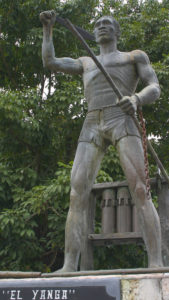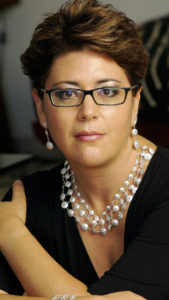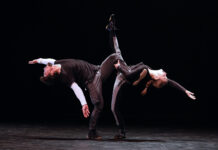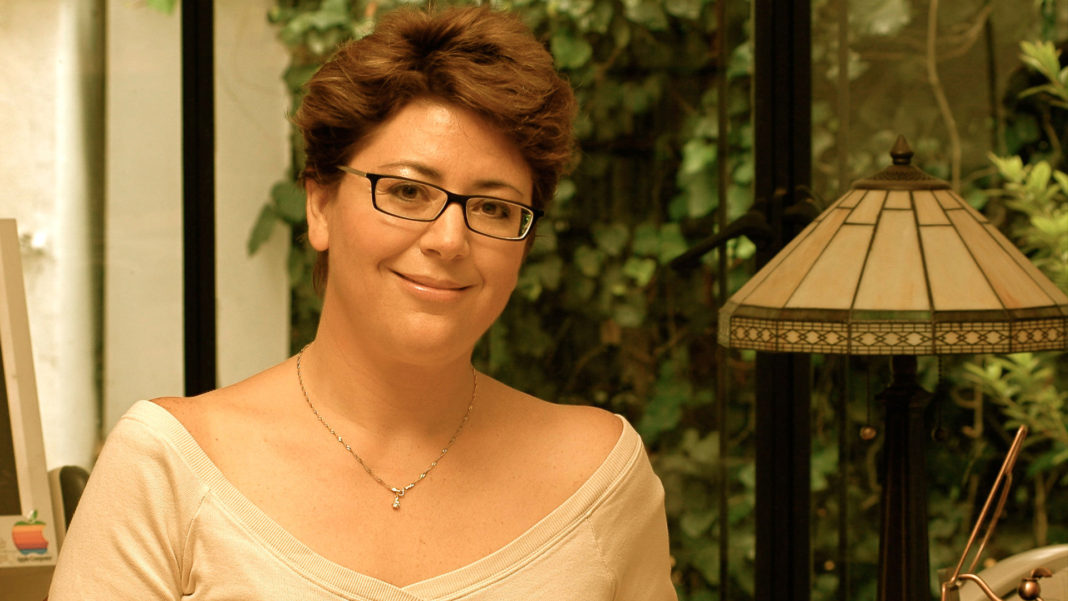“Yanga” is not a thing, expression or a word in a foreign language. He was a person. And when composer Gabriela Ortiz was asked to write a new work for the LA Philharmonic, a work that would be played before Beethoven’s Ninth Symhony, she knew Yanga would be the subject to connect the concept of joy between the two works.
Yanga will have its world premiere on Sunday afternoon in an LA Philharmonic concert lead by Gustavo Dudamel. It is, according to Ortiz, the final work commissioned as part of the orchestra’s centennial celebrations.
Two weeks ago I spoke by phone with Ortiz who had recently arrived in Los Angeles to prepare for the concert. We talked about who Yanga was, the work she does and the challenge Mexican classical composers face in getting their music heard.
How and why did you settle on Yanga as the inspiration for your commission?
Gustavo asked me to write a piece that should be played with Beethoven’s 9th. We’re talking one of the most famous pieces. I was shocked and scared. I thought I needed to do something different from Beethoven. He also requested me to write in Spanish and to explore something that goes with the theme of Ode to Joy.

Who was Gaspar Yanga?
He was the African Prince from the Gabon and he came to Mexico in the 16th century as a slave. He was gay. He organized with other slaves their escape and he was able to negotiate with the Spanish crown to settle the first free town in the Americas. This is so important in Mexican history.
With Yanga we are talking about something that is still going on. Not like 16th century slaves, but we still have people that are not completely free. We have to fight racial problems. This is very important – talking about liberty and those issues which is what Ode to Joy is talking about.
Musically will Yanga have any links to Beethoven?
Musically it is totally different. We are talking about something very interesting for Mexicans. When you think about Mexican culture you think about the indigenous Mexicans and the Europeans. There is a third group which is African and is very important in places like Veracruz or in Oaxaca and Guerrero.
If you hear the music, you will see how important the African influence is in the music. It’s important to talk about this third group. Everything is from my imagination, but I am using a percussion quartet because I wanted to add the color of these instruments that came to Latin America.
You told El Heraldo that this is “one of the most important projects” of your career. What makes this one so important for you?
I’m taking a risk which is important for me. I always try to take some risks and explore new things. In this case, Yanga is an exploration. The way the choir is used is very rhythmic with polyphonic textures and percussion and orchestra. It is a very big piece. I’ve dedicated a lot of time working on this. It’s very important because of that.
The LA Philharmonic recently played a work by Carlos Chávez. I’m also well-acquainted with the work of Silvestre Revueltas. What Mexican composers have inspired you and are perhaps not as well known as they should be?
I admire those composers a lot. My teacher was a student of Carlos Chávez and I’m part of that tradition and I’m coming from that tradition. Sinfonia India by Chávez has a lot of things in common with Yanga. And Revueltas is a genius. Absolutely a genius. It’s very sad that he died very young. Sensemyá is brilliant.

In September Classical Today tweeted, “Dvořák once predicated that American classical music would be rooted in the black vernacular. Why then, has the field remained so white?” You said you felt similarly as a Latin American composer. What will it take for that to change?
It has already been very difficult to be a composer, a contemporary composer. But being a Latin American and a woman is even more difficult. I feel this in Europe. Europe never looks to Latin America. Never! If you look at the programs in Europe they hardly know who is Chávez or Revueltas. They are so Euro-centric. In that sense is it very difficult for us to have a path.
I have been reading lots of works about contemporary music. In them I’ve only found one reference to Latin American music – conga music. That’s all. The whole continent. It’s very frustrating because they don’t think we deserve attention. In fact, we have, in Mexico, a very strong movement of good composers. It’s just very hard to open a path.
Yanga strikes me on paper as a semi-political piece. What role does politics play in your work and is the work you do a political act in and of itself?
Talk about border issues. We don’t need borders. We all share the same air, the same planet. I understand why you have them for political and economic reasons, but why do we need those differences? We’re all human beings. For me the ideal world would be something we can all share with equity and respect.
Music is an abstract language. Not all my work is political, but when I need to say something I will because I think we need a better world.
Main Photo of Gabriela Ortiz courtesy of the LA Philharmonic Association
Additional photo of Gabriela Ortiz courtesy of her website
Photo of Yanga Statue courtesy of Wikipedia Commons











